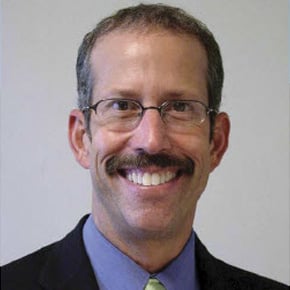Kenn Apel: Media Champion During the Digital Media Revolution

“To me, if someone reads an article or hears a story and learns something, then it is worth it.”
One year later, Kenn Apel still marvels at the public reach that media has afforded to the update to Beyond Baby Talk, the ASHA-sponsored book on language and literacy development he co-authored with fellow speech-language pathologist Julie Masterson. First published in 2001, the fully revised version of the book was released in 2012. As part of a multi-pronged media campaign organized by ASHA to support the new book’s release, Apel participated in live and taped radio interviews, chats with bloggers, and a variety of other media.
Like Masterson, Apel is no stranger to media. But the time that elapsed between the first and second editions of the book marked a digital media revolution. In 2001, Facebook was still a few years away from its inception. Contrast that with 2012, when Facebook topped one billion users and Beyond Baby Talk launched its own Facebook page. “Just last week, someone from Saudi Arabia liked our Facebook page,” Apel says. “It’s amazing to me that we can reach an international audience through this medium.”
Far from being a passive bystander, Apel embraced this new media. Along with Masterson, Apel is still posting at least weekly to the Facebook page. Most don’t believe it is actually the authors who are writing and responding, he says. He also worked with many bloggers, and was pleasantly surprised at how informed and engaged they were.
Apel was also heavily involved in working with traditional media to promote the book. He knows that many of his peers may have mixed feelings about becoming involved in media work. “To be honest, it can be nerve-wracking to do a live interview. For me, radio is especially tough because I can’t see the person I’m talking to and I don’t get the feedback I’d like to receive. Still, I like doing it because I like talking about language. The benefits far outweigh the drawbacks.”
Through his experience, Apel has learned what works and what doesn’t when talking to media—of all types. His top tips to anyone who gets involved in media work: know who your audience is, and keep your answers short and to the point.
Apel says he would “absolutely” recommend his fellow ASHA members jump on the opportunity to get involved in media efforts if they can. “To me, if someone reads an article or hears a story and learns something, then it is worth it.”
And as healthcare evolves, it is more important than ever for the public to have knowledge of—and appreciation for—the role of speech-language pathologists, Apel notes. “I still think most people have no clue what a speech-language pathologist does.”
But what is the most rewarding part of media work? His role as chair of the Department of Communication Sciences and Disorders at the University of South Carolina, Columbia, drives his thinking there. “What would really be cool,” he says, “is if someone hears a media story and goes into the profession because of that. We need more people involved, and media is one way to spotlight speech-language pathology as a viable, active profession.”











